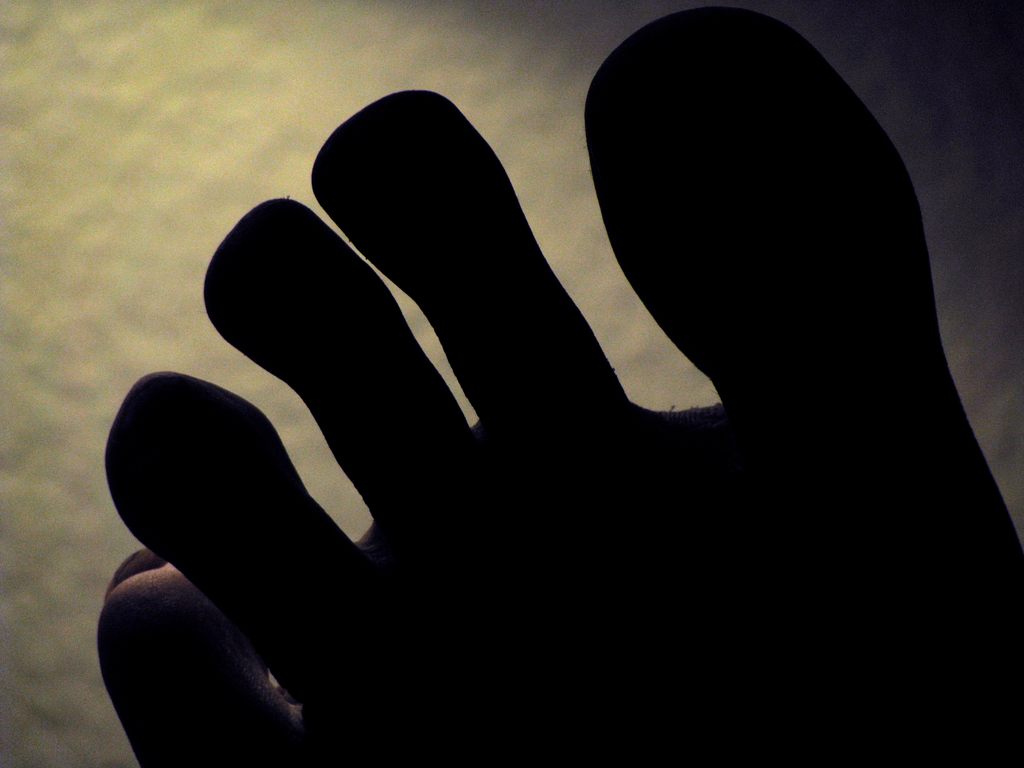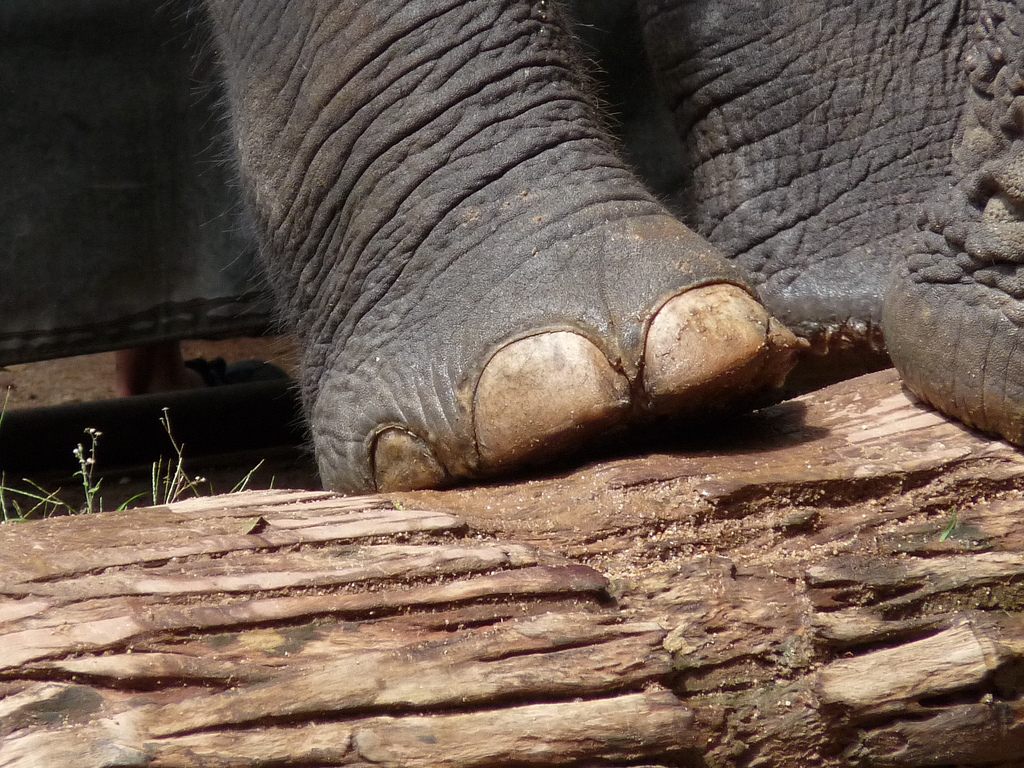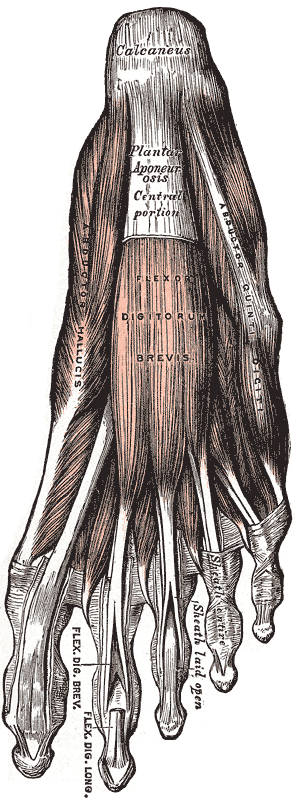Why Do We Even Have Toes?
Seriously, why?

What are these for? (Photo: Andy/Public Domain)
Not long ago, after I accidentally kicked the radiator next to my bed and brutally stubbed my toe, I looked down. I saw ridiculous mutant-finger-like protuberances coming out of my foot, part of them covered with useless nails that seem to need clipping much more often as I get older. “What is the point of these garbage toes?,” I wondered. They’re lousy at grabbing things, they break easily, and they look, in a pure aesthetic sense, weird.
Are they the appendix of the foot, worthless remnants from our ape days just waiting to wreak havoc?
In reporting this story, I contacted a number of podiatrists and orthopedic surgeons who declined to comment, presumably too busy to ponder the lower digits. Luckily, Dr. Terry Philbin, a board-certified orthopedic surgeon and spokesman for the American Academy of Orthopaedic Surgeons who focuses exclusively on the foot and ankle, finally took time to explain the meaning of our toes.
Humans join most of the animal kingdom in the digits, of which there is great variety and size. Think of an elephant, with toes barely distinguishable from the rest of the trunk-like foot. Cats and dogs have very small toes compared with the size of their feet. (Both those animals walk on their tiny toes, making them both a type of animal called a “digitigrade.”) Then there are primates like the gibbon, with long, floppy feet boasting five very long and supple toes, including one thumb-like opposable finger.
Humans are somewhere in the middle; we have, with few exceptions, very small but distinct toes, one of which (the big toe) is substantially larger and stronger than the others, but none of which provide very much gripping ability. To understand why our toes are so small and shitty, we have to take a look at the foot as a whole, and see how we walk and run.

Elephant toes. (Photo: Katy Rawlings/CC BY-ND 2.0)
“As you go from the back of your heel to the front of your toes, each segment of the foot becomes more adaptable and less rigid,” says Dr. Philbin. He splits the foot into three basic segments: the hindfoot (the heel and ankle), the midfoot (the arch and ball), and the forefoot (the toes). In what orthopedic surgeons still mostly think of as a “standard gait,” the impact of the ground starts from the back and ends up in the front. This is sometimes called “heel-striking.” The extremely hard, tough, rigid hindfoot absorbs the initial impact.
Then as you roll forward, the flat bottom of your foot hits the ground. The muscles of the hindfoot and midfoot, like the achilles tendon and the various plantar muscles on the bottom of the foot, absorb the force from the ground, acting like shocks in a car. Then they have to lift up the heel, levering you forward onto your toes, before the toes push you off into the next step. Walking and running is, basically, falling down and catching yourself over and over.
The fairly recent trend of barefoot running, including those gaudy toe-shoes, tries to overturn all of that and place the initial force on the forefoot. But this is far from the norm; unless you consciously try to make a gigantic shift in the way you move, you’ll be doing a heel-striking gait.
Our walking style forces the foot to become a bunch of different things in different phases. It has to be a shock absorber at first, but then it has to propel us forward. Try this out with an experiment: Raise your big toe as high as you can. Feel the muscle on the bottom of your foot tightening? That muscle is a flat ligament called the plantar fascia, and it connects the base of your toes to your heel.

Computer simulation of a human walk cycle. (Photo: Maximilian Schönherr /CC BY-SA 3.0)
When you first land a step on your heel, and then when your midfoot hits the ground, your plantar fascia is loose, like a floppy rubber band. The way to make it taut is to do what you just did: raise your toes. Making it taut allows you to lift your heel off the ground, giving your foot a lot of potential energy: that rubber band is just waiting to be sprung free. So you rock onto your toes, lifting them and pulling the rubber band taut, and then when you push off with your toes, you release all that energy and are sprung forward. This is all called the windlass effect, or windlass mechanism, and there are diagrams here if you’re interested.
Without toes, that entire mechanism won’t work; there’d be no way to tighten the plantar fascia and our walk would look weird and Frankenstein-y and in order to move forward we’d have to come up with some completely different method for propelling ourselves. As it stands, the way our feet are set up requires toes, and without them, like if you cut them off in a fit of rage after stubbing them one last time, you’d be placing a whole lot of weight and stress on parts of your foot that aren’t designed to handle them.
But that only means that we need to have something that’s pretty flexible out in front of our feet. It doesn’t mean that we need five individual stupid little toes; there’s nothing stopping us from having one giant toe like a flipper. Dr. Philbin told me he’s not sure of any real reason why we need five toes; he suspects that having separate appendages out there might give us slightly better balance, but the question of why we have five toes (and five fingers) is pretty much unanswered. There’s no reason we know of why we couldn’t get away with four, or three or one giant toe.

An illustration showing the plantar fascia from Henry Gray’s Anatomy of the Human Body, 1918. (Photo: Bartleby/Public Domain)
In fact, webbed toes (medically: syndactyly) are not fantastically uncommon in humans, affecting about one in every 2,500 births. Typically it’s only the second and third toes that are linked together; Dr. Philbin says he’s never seen an instance of someone with all five toes webbed together. But he also won’t do surgery to separate them—it’s a cosmetic procedure. On the other hand, he also says webbed toes don’t make you a better swimmer, which is kind of a bummer.
But that brings us to another question: why are our toes so stubby and non-dexterous? If a gibbon can grab a fig off a tree with its feet, why can’t we?
The question is divisive, but a trio of studies in 2009 and 2010 think they may have an answer, and it’s rooted in our deep past. The answer lies in a big question, namely the difference between us and a gibbon.
Gibbons are almost completely arboreal, meaning they live in trees; on ground, they’re kind of awkward and clumsy and many of them can only move by sort of skipping sideways.
The first 2009 study experimented with lengthening our toes to see what would happen, and it found that even a modest increase in toe length required much, much more energy to run: only a 20 percent increase actually doubled the amount of force generated. More force has strengths and weaknesses, as the second 2009 study found out: it looked at the toe lengths of sprinters and found out that sprinters have on average much longer toes than non-sprinters. The longer toes help generate more force, and thus propel the sprinters faster—but for much shorter periods of time, because it requires more energy.
Short toes are ideal for long-distance running and walking. The 2010 paper found that humans are fantastically efficient at covering long distances precisely because the way our feet work—including our toes—uses very little energy. How we use our toes, it turns out, makes us human.















Follow us on Twitter to get the latest on the world's hidden wonders.
Like us on Facebook to get the latest on the world's hidden wonders.
Follow us on Twitter Like us on Facebook